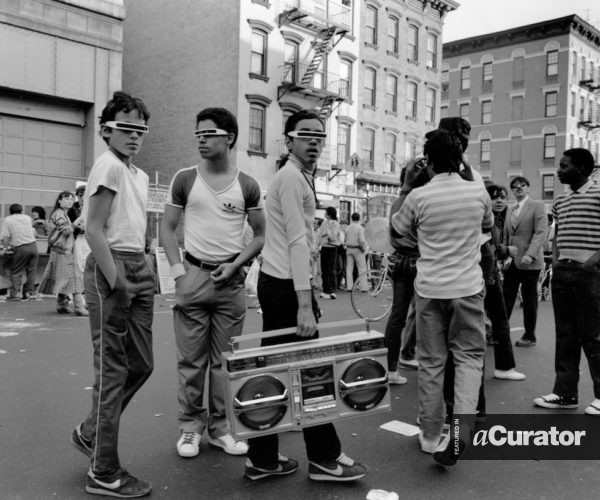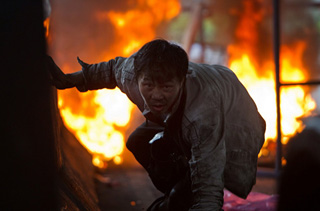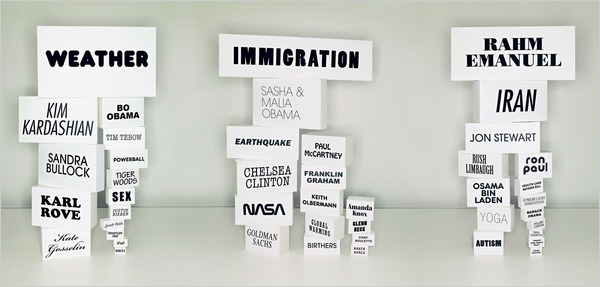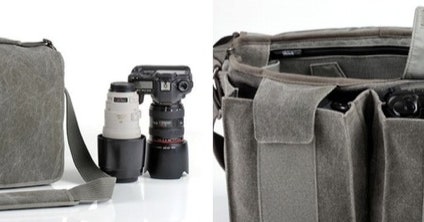
Increasingly dissatisfied with the single frame as “the carrier of information and the definer of context,” Robbert Flick developed a breakthrough grid format termed Sequential Views

Increasingly dissatisfied with the single frame as “the carrier of information and the definer of context,” Robbert Flick developed a breakthrough grid format termed Sequential Views
Welcome to the official Leica blog.
Here, we will post stories from around the world from Leica photographers, and insight on their photography techniques. You can also expect to see the latest news on Leica’s product development and related events. Our hope is to present you with words and images to complement your Leica experience.
Link: The Leica Camera Blog
via: Leica News & Rumors
This was my main aim when I decided to quit my job at the Associated Press. I wanted to go back to taking pictures and telling the stories of people whose lives had changed forever because of the war, especially the 2006 summer one. In a way I wanted to tell my own story with the war, during which, the country was packed with local and international media covering the daily events, but then few weeks after the war ended, they all packed their stuff and went back home to rest, while I stayed at the office working, of course with other local colleagues and very few international photographers who came each for few weeks.
Link: Conscientious Extended | A Conversation with Dalia Khamissy
I happen to think there was a wide-range of photography represented and far more surprises than one would find in most publications. There are photo festivals that focus on much more traditional documentary work but that’s not what the New York Photo Festival is trying to do.
The Dutch photographers shared a similar analog ethos as well as an enthusiasm for doing work that is extremely personal to them, and important for the public to appreciate. But most important about the Dutch photographers was their DIY sensibility that told photographers not to wait for editors and publishers to find their work but to go out there and make it themselves.
Link: Bucking The Trend: Rob Hornstra Finds Success Publishing Photo Books – The Photoletariat

The continuous withdrawal of mental health funding has turned jails and prisons across the U.S. into the default mental health facilities.

@ Martin Parr
“I don’t see why you would want to reject it. Commerce makes things happen. One doesn’t want to be in the publicly subsidized ghetto, speaking to one percent of the population. Photography has the ability to be democratic, promiscuous and
via AMERICAN SUBURB X: http://www.americansuburbx.com/2010/05/interview-interview-martin-parr.html?utm_source=feedburner&utm_medium=feed&utm_campaign=Feed%3A+Americansuburb+%28AMERICANSUBURBX%29
photography is a commercial activity. Even high art photography wants to be commercial, because everyone wants to sell prints. I mean, the wealthiest photographer in the world is probably no longer fashion photographer Steven Meisel, but Andreas Gursky, who is at the top end of the art market. So it is interesting that the art market, financially often regarded as the poor cousin of commerce, is now way ahead of the commercial fashion industry. You can ask any photographer what he or she wants and they’ll probably answer: I want to do my own work, I want to sell my work as prints. Ultimately that is a commercial goal. So we’ll never be far away from the notion of commerce.
The 3D “coverage” is being executed by DUMBO resident Martin Lenclos. Lenclos creates 3D online experiences of actual events, through the interplay of photos and video interviews, all set in an evocative 3D representation of the event’s environment. Soon after an event begins, a virtual version is launched, which those interested can then visit and explore, both contemporaneous with those attending the event live, or at any point thereafter. The rendered 3D world immerses visitors in the environment of the event, and vastly expands the number of people who can experience it.
via: Martin Lenclos
Police instruction to 5,000 guards helps explain recent cases of photographers stopped and searched under Terrorism Act
via the Guardian: http://www.guardian.co.uk/uk/2010/may/13/city-london-security-guards-report-photographers
Police instruction to 5,000 guards helps explain recent cases of photographers stopped and searched under Terrorism Act

Rina Castelnuovo does not have an easy time covering Israelis and Palestinians. But as Joseph Berger learned, she wouldn’t do anything else.
via Lens Blog: http://lens.blogs.nytimes.com/2010/05/17/showcase-162/
Ms. Castelnuovo has been documenting the conflict between the Palestinian and the Israelis for more than 30 years, 17 of them as a contract photographer for The New York Times based in Jerusalem. These days, she works alongside the correspondents Ethan Bronner and Isabel Kershner.

Newly-acquired works on view at The Museum of the City of New York. From aCurator.com
via aCurator: http://www.acurator.com/
I’ve decided to set up a similar tournament for Street Photography. I’ve chosen 64 of the best Street Photographers in history, seeded them, and designed a tournament bracket.

The political protest in Bangkok, Thailand has been active for nearly two months now, and has entered a new, deadly phase in the past week, with at least 36 of the total 60 deaths occurring in just the last few days. Ant-government “Red Shirt” protesters
via Boston.com: http://www.boston.com/bigpicture/2010/05/protests_turn_deadly_in_thaila.html
photos of the recent turmoil in central Bangkok

The author of “The Perfect Storm” spent months with American soldiers in a lethal corner of Afghanistan and details their intense lives in this original account.
Link: http://www.nytimes.com/2010/05/16/books/review/Filkins-t.html?partner=rss&emc=rss
The best way to describe Junger’s book is to say what it is not. “War” does not attempt to explain the strategy behind the American war in Afghanistan, or the politics of Afghanistan, or even the people of the Korangal Valley. As the action unfolds, Junger makes no attempt to connect it to anything else happening inside the country.
Instead, he uses the platoon (the second of Battle Company, part of the 173rd Airborne Brigade) as a kind of laboratory to examine the human condition as it evolved under the extraordinary circumstances in which these soldiers fought and lived. And what a laboratory it is. The men of Second Platoon are young, heavily armed and crammed together inside a tiny mountain outpost supplied by helicopter and surrounded by enemies determined to get inside. Indeed, there aren’t many places on earth where such intense and bizarre circumstances could be duplicated.

When news is search-driven, audience-targeted and everywhere, what’s a story worth?
Link: http://www.nytimes.com/2010/05/16/magazine/16Journalism-t.html?partner=rss&emc=rss&pagewanted=all
“Maybe this is what success looks like,” says Nick Denton, speaking of his own business, Gawker Media — a popular and profitable network of Web sites covering technology, sports and celebrity news — as well as of disruptive ventures like Craigslist, the free site that has decimated classified advertising, once a lucrative source of income for newspapers. “You can have destroyed hundreds of millions of dollars, or billions of dollars, of revenue for other people,” Denton says, “but without capturing it all yourself.”

via WIRED: http://www.wired.com/rawfile/2010/05/gallery-maximum-rocknroll/
This year MRR released its first photography issue, interviewing punk shooters and showcasing contributions from MRR’s global readership.
Punk’s in-your-face aesthetic is as different from detached rock stars as Maximum’s anti-commercial stance is from corporate magazines. Despite the dire financial straights of many media outlets, including MRR, the photo issue has sold out, proving there’s still life underground.

ThinkTank, the master of shifting photo-gear, is better known for its TARDIS-like airline carry-on cases than for smaller bags. The new Retrospective series may change that. The Retrospective bags are stealth bags. The “pinestone” colored bags are especia
via WIRED: http://www.wired.com/gadgetlab/2010/05/stealthy-thinktank-photo-bags-expand-to-fit-everything/
The soft-sided shoulder bags come in three sizes and will hold a big DSLR body and lens along with space for a few more lenses. Because they are soft, there is a lot more flexibility as to how you cram in your gear. The layout, though, makes quick lens-changes pretty easy: the lenses are kept upright for grabbing quickly.
The thin dividing line between photographic observation and intrusion is examined in a challenging and disturbing exhibition at Tate Modern, writes Sean O’Hagan
via the Guardian: http://www.guardian.co.uk/artanddesign/2010/may/16/exposed-voyeurism-surveillance-camera-review
“Photography,” Diane Arbus once said, “was a licence to go wherever I wanted and to do what I wanted to do.” Arbus, who famously photographed American outsiders and eccentrics, including so-called freaks from carnival shows, also described the lure of the camera thus: “I always thought of photography as a naughty thing to do… when I first did it I felt very perverse.”
our full interview with Applewhite, in which she describes the role photography plays in the work The Pulitzer Center supports, how photojournalists can strengthen their applications for funding, and how the organization expects its grantees to help reach an audience well beyond readers of a single media outlet.
Link: Q&A: Getting Funding from The Pulitzer Center on Crisis Reporting
Over the past year I have been emailed frequently by photographers inquiring the “how to’s” of embedding to Afghanistan, especially those who are first-timers. I wrote very similar emails like this to very experienced colleagues (such as Alan Chin, John Moore, and Teru Kuwayama, to name a few) before I embedded for the first time in 2009. To save us all a lot of trouble (those asking the questions and those having to repeat the advice) I decided to compile a document entailing a list and series of frequently asked “Q and A’s”, as well as information given to me from these colleagues in the field; without their help my embed would have been much more difficult.
Link: Advice for first-time embeds to Afghanistan | Lightstalkers
A panel discussion kicked off the New York Photo Festival on Thursday that featured Elizabeth Biondi, Visuals Editor at The New Yorker and four photographers from the relatively new photo agency, INSTITUTE. The topic was “New Directions in Storytelling” and Biondi began the talk by professing that she will always be “rooted in traditional storytelling.” But the photographers that followed showcased the ways they’ve adapted to changing media platforms and new methods of doing business.
Link: Photography and New Media at New York Photo Fest – The Photoletariat